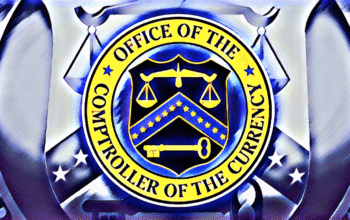 Last week, the Federal Deposit Insurance Corporation (“FDIC”) was part of two releases clarifying that only insured banks and thrifts enjoy FDIC insurance, notwithstanding what some non-banks may say in their marketing materials. The first release, together with the Federal Reserve Board (“FRB”), is a cease-and-desist letter to Voyager Digital (the “Joint C&D Letter”). The second is an FDIC Advisory to FDIC-Insured Institutions Regarding FDIC Deposit Insurance and Dealings with Crypto Companies.
Last week, the Federal Deposit Insurance Corporation (“FDIC”) was part of two releases clarifying that only insured banks and thrifts enjoy FDIC insurance, notwithstanding what some non-banks may say in their marketing materials. The first release, together with the Federal Reserve Board (“FRB”), is a cease-and-desist letter to Voyager Digital (the “Joint C&D Letter”). The second is an FDIC Advisory to FDIC-Insured Institutions Regarding FDIC Deposit Insurance and Dealings with Crypto Companies.
The Joint C&D Letter
In the Joint C&D Letter, the FDIC and FRB ordered Voyager to stop making statements that “suggest in any way, expressly or implicitly, that (1) Voyager is insured by the FDIC; (2) customers who invested with the Voyager cryptocurrency platform would receive FDIC insurance coverage for all funds provided to, held by, on, or with Voyager, without reference to the insured depository institution account; or (3) the FDIC would insure customers against the failure of Voyager itself, from Voyager’s websites…” This letter follows Voyager’s suspension of trading on its platform and filing for Chapter 11 bankruptcy.
The Joint C&D Letter noted that Voyager did put some customer money in deposits at an insured New York State member bank (hence, the involvement of the FRB) and that Voyager’s statements were possibly misleading to consumers because, while dollars deposited in the insured depository institution partner of Voyager would enjoy FDIC insurance, and thus protection in the event of the bank’s failure, that insurance does not mean Voyager itself is FDIC insured.
The Advisory
The FDIC’s Advisory followed a similar theme as the Joint C&D Letter in that it is important that any non-bank financial companies, such as crypto exchanges that partner with insured depository institutions, do not cause consumer confusion when offering non-bank services but also partners with an insured bank or thrift. The FDIC’s advisory seems to suggest that the FDIC expects an affirmative duty on the part of the insured bank that partners with non-bank financial providers to monitor their non-bank customers for what might be false or misleading statements, stating “… insured banks should confirm and monitor that these companies do not misrepresent the availability of deposit insurance in order to measure and control risks to the bank, and should take appropriate action to address such misrepresentations.” Some banks were likely doing that already, but for some, this might be an additional risk management process they would need to add.
Both the Joint C&D Letter and the Advisory follow the somewhat recent disruptions in the crypto stablecoin markets, as well as the FDIC finalizing amendments to its rules regarding misrepresentation of insured status in June. The announcement last week makes clear that the FDIC and the other federal bank regulators will be on the lookout for marketing from non-bank financial providers, especially crypto exchanges and wallets, that may be viewed as misleading by implying that FDIC insurance applies to funds or investments where it does not.



